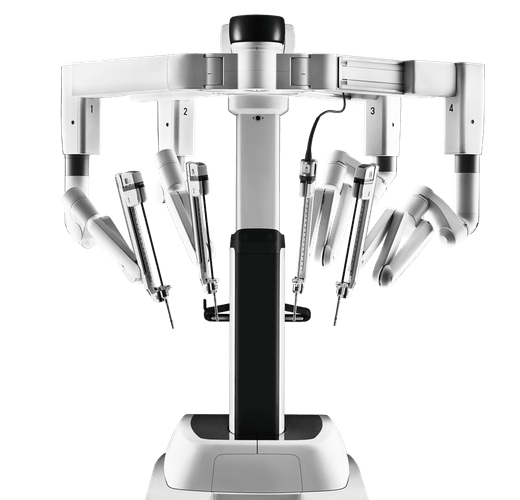
If you’ve been told you need surgery to treat gallbladder disease or repair a hernia, or you have another health condition requiring surgical intervention, you may have heard about the great success patients have with robot-assisted surgery. At the same time, you probably have many questions about this relatively new technology.
The highly-trained team of experts at the Center for Minimally Invasive and Robotic Surgery in Peoria, Arizona, understands your concerns. Our surgeons are renowned for their expertise using the da VinciⓇ Surgical System and has done more robotic general surgery operations than any practice in Arizona. Additionally, the team has developed the techniques for robotic hernia repair used throughout the world.
To help you better understand this cutting-edge technology, we’ve curated answers to all of your questions about robot-assisted surgery. Read on to learn more.
What is robot-assisted surgery?
Robot-assisted surgery is a type of minimally-invasive surgery completed through small incisions. The da Vinci surgical system at CMIRS uses high-definition, three-dimensional cameras coupled with specialized surgical tools that enable surgeons to operate with more precision and better control.
The physicians at the Center for Minimally Invasive and Robotic Surgery are fully trained in the da Vinci technology, so you can rest assured knowing you’ll receive the superior surgical care for the best possible outcome.
How robot-assisted surgery works
During robotic surgery, your surgeon inserts a tiny camera through a small incision in the surgical area. The camera sends a high-definition, 3D image of the surgical site to an external monitor in real time.
Using computer-assisted technology that guides specialized surgical instruments, your surgeon directs the robot with better control, precision, and range of motion than is possible with traditional surgery. A support team assists the surgeon with other surgical tasks.
Will the surgeon be with me in the operating room?
Many patients wonder who is operating on them: the robot or the surgeon.
Robot-assisted surgery is a system that enables surgeons to operate with precise, delicate motions by controlling the machine. The robot never makes decisions or performs incisions on its own — it only responds to your surgeon’s hand and finger movements.
Your surgeon is located at a console in the operating room near you and the experienced support staff, directing the procedure the entire time. The robot allows for greater precision than the human hand has on its own, and your surgeon is in charge the whole time.
Conditions that can be treated with robot-assisted surgery
The surgeons at CMIRS address a variety of medical issues using minimally invasive surgery, including:
- Appendicitis
- Hernias
- Colon disease
- Gallbladder disease
- Gastroesophageal reflux disease (GERD)
The benefits of robotic surgery
Robot-assisted surgery at CMIRS has many benefits. Patients experience these benefits both directly and indirectly. For example, because robot-assisted surgery is minimally invasive, a direct benefit to you is a shorter recovery time. And because the surgeon has better access to the operative area, an indirect benefit is a more precise surgery.
Other benefits include:
- Smaller incisions
- Greater range of motion and dexterity for the surgeon
- High-resolution, highly-magnified image of the operating field for better visualization during surgery
- Shorter hospital stay
- Lower risk of infection
- Reduced risk of blood loss
- Faster recovery with less pain
- Minimal scarring
- Better clinical outcomes
In addition, due to the enhanced control, flexibility, and precision that robot-assisted surgery offers, surgeons can complete complex or delicate procedures that may be difficult or impossible with traditional surgery.
Am I a candidate for robot-assisted surgery?
Although robotic surgery offers excellent outcomes for many patients, not everyone is a good candidate. The team at CMIRS may recommend against robot-assisted surgery if:
- You’re unable to have general anesthesia
- You have significant scar tissue or other issues that prevent the cameras from visualizing the surgical area
- You’ve been diagnosed with bleeding problems that put you at risk for any surgery
- You’re not a candidate for laparoscopic surgery
After a full evaluation of your condition and overall health, the surgical team at CMIRS will determine if robot-assisted surgery is right for you.
Interested in learning more about robotic surgery to address your health concern? Call the Center for Minimally Invasive and Robotic Surgery or schedule a consultation online today.

